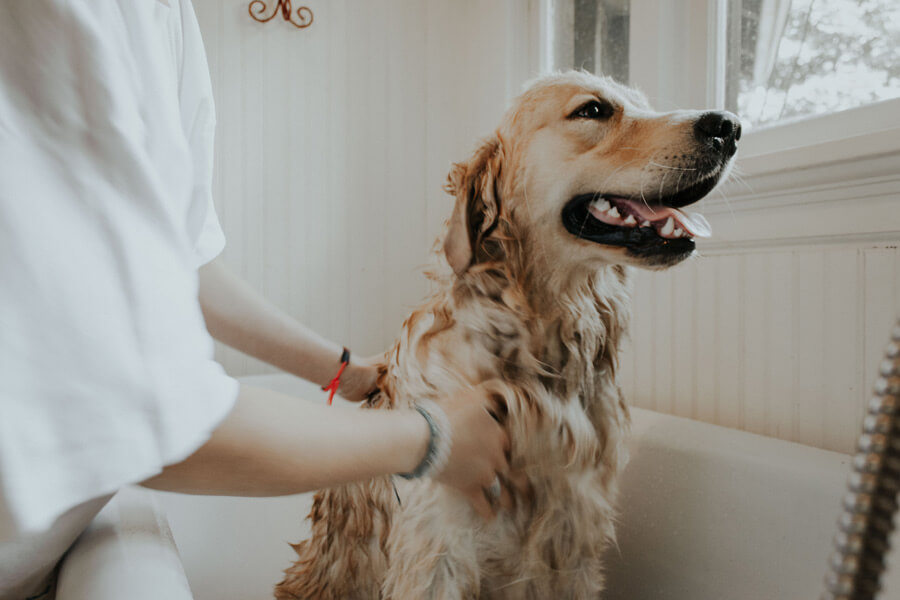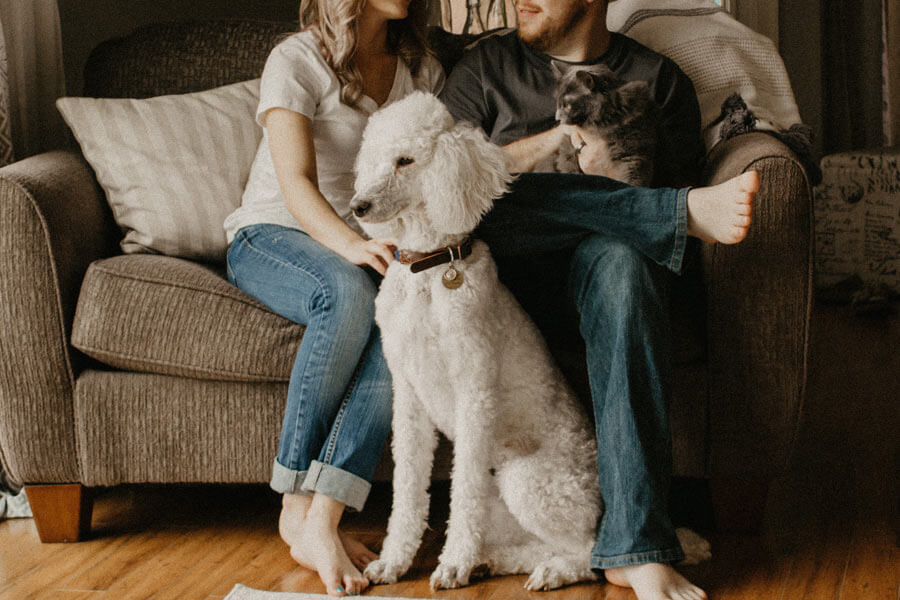Pet sitting can take various forms. Yet, whatever fashion your pet sitting job takes, it’s a trusted role that involves caring for animals and being in the company of pets.
Certainly, the definition of pet sitting is ‘the act of temporarily taking care of another person’s pet for a given period of time.’ However, pet sitting can take on many different structures.
Most commonly you will go to the pet owner’s home to care for and feed their pet. However, in some instances you may need to bring the pet into your home. Some pet sitters will stay at their client’s home while they’re away, while others will simply visit the home multiple times a day to care for and feed the animal.
Either way, if you love animals pet sitting provides a wonderful opportunity to make a living while spending time with adorable fur friends.
But before you decide on a career as a pet sitter, be sure to consider the ups and downs. This way you’ll ensure you’re entering into a role you fully understand and for all the right reasons.

Image source: Connor Moynihan on Unsplash
Pet sitting: PROS
Low start-up costs — Compared to some other businesses, becoming a pet sitter requires little monetary investment. Plus, you’ll start earning as soon as you score your first client. Much or your new business is likely to come via word-of-mouth referrals, which is great as it keeps advertising costs low.
Turn your love of pets into profit — How awesome is it that you can turn your love of animals into a successful business? If dogs and cats are your passion, becoming a pet sitter is the perfect way to spend time with delightful animals and make a bob or two. It’s really a win-win for you and your client.
Be your own boss — While there are both pros and cons to being your own boss, essentially it’s a good thing. Yes, you need to drive your own destiny and be extremely self-motivated but as long as you want to make pet sitting a success, there’s really no reason why you can’t.
What’s more, being your own boss means you can work as much or as little as you like. Of course, if you want to make a decent income you won’t want to turn clients away. However, eventually you may be in a position to pick and choose the pet sitting jobs you want and turn down those you don’t fancy. For example, the ones with 5am starts!
Loyal clients — Generally speaking, if you have a polite and professional nature and do your job well, you’ll enjoy a loyal client base. After all, if a pet owner finds a trusted and likeable person to look after their beloved pet, they’re going to want to hang onto them.

Image source: Jérémy Stenuit on Unsplash
Pet sitting: CONS
Unsociable work hours — It’s highly likely you’ll be required to work some early mornings, weekends and evenings, as this is when animals generally get fed and are exercised. However, the varied nature of pet sitting means you get time off during the day to run errands and do other things. So, if you’re someone that doesn’t like the rigid structure of a 9-to-5 gig, pet sitting might be perfect for you.
Last-minute and late-night calls — Yes, these are common; so be sure to set boundaries at the very first client meeting. If you don’t make the conscious decision to lay down rules, you’re likely to be taking a lot of last-minute calls from clients wanting to cancel or reschedule their booking.
Perhaps consider a late booking charge. This as least makes it worth your while to take last-minute bookings. Plus, it might deter some clients from making late changes!
Also, because pet sitting isn’t a 9-to-5 role, people may feel it’s okay to ring you at any time of the day or evening. Whether you take the calls or use a voicemail message service is entirely up to you. You certainly don’t want to lose business, but you do want a life out of work too!
Managing expectations — As a pet sitter you may be expected to provide other services, such as cleaning the house, picking up dog poop in the garden, washing dishes, bathing or grooming the dog, cooking homemade meals for Fido and even walking Rover a specified distance.
Make sure you do your research and consider as many of the potential additional jobs as you can. Draw up a price list; this way if you receive a note or email asking you to perform extra tasks while pet sitting, you can add them onto your bill.

Chasing payment — This really applies to anyone who’s self employed; chasing money sucks. However, you do get used to it and you learn what actions you can take to help reduce the amount of money chasing you do.
For example, sending your invoice out at the same time each month can encourage clients to pay regularly. Also, you can specify on your invoice your payment timeframe as part of the terms of your service.
Ultimately, if a client continues to not pay you or is always a late payer, you might decide they’re not worth the trouble and choose to let them go.
Animal know-how — While you can be a pet sitter without any formal training, you really do need some knowledge and experience of animals. After all, what if an animal in your care gets injured? Do you know pet first aid? What if the pet you’re looking after becomes aggressive? Understanding animal behaviour and knowing what to do if a pet is anxious or bites is important for the health and wellbeing of you, the pet and others around you.
Despite the challenging aspects of being a pet sitter, if you love animals and want a job that isn’t tied to a desk, being a pet sitter may be a dream career.
If you’re a pet sitter, we’d love to hear from you. Tell us what you love and dislike about your role or what you wish you’d known before you got started!
If you enjoyed reading this, check out the other posts in this series:
Pros and cons of being a dog walker
Latest posts by Liz Walden (see all)
- Pet health: Medicinal cannabis for pets - December 27, 2021
- What pet business insurance do I need? - November 17, 2021
- Pet sitters: how to take time off - November 15, 2021










I’ve been a pet sitter for 27 years. Much of what you’ve said is true. However, in the case of payment, I have always required payment in full. Either paid prior to pet sitting or the client must leave money in the residence before leaving. Saves on all sorts of headaches.
That’s a good point and an excellent idea. Thank you Ann!
Well over 90% of new pet sitters and dog walkers quit before the end of their first year in business. Why? Because this job is a LOT harder than it looks. When you are a successful pet sitter, you work ALL weekends and ALL Holidays. There’s absolutely no way around it if you want to keep your clients. If you’re someone who likes to spend weekends at the cabin or be with friends and family at Thanksgiving, you will be miserable.
Not all pets are “adorable fur friends”. Owners hire professional pet sitters when the complexity of diet or medical care goes beyond what the girl next door “pet sitting for extra cash” can handle. Caring for other people’s pets is a lot different than caring for your own. You are not allowed any mistakes. The liability can be very stressful. In terms of starting costs, liability insurance is a MUST, and depending on your location, business licenses. Unless of course, you’re ok with the idea of being sued or pay for your client’s pet vet bills out of pocket.
So anyone who’s thinking of starting a pet sitting business should be well prepared.
Thanks for sharing your insights Kathleen and the importance of liability insurance. Information and preparation is key when starting out in any business.